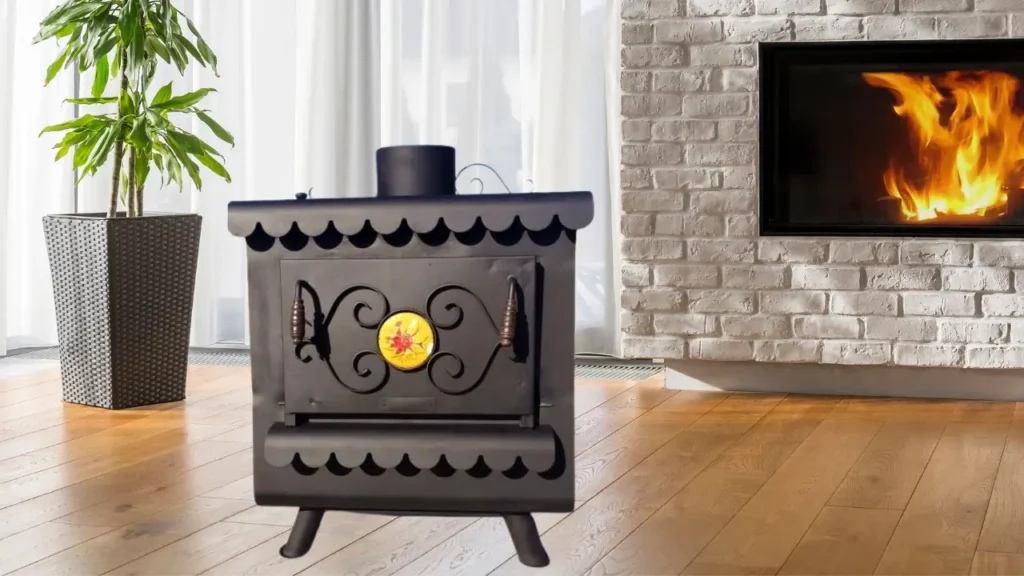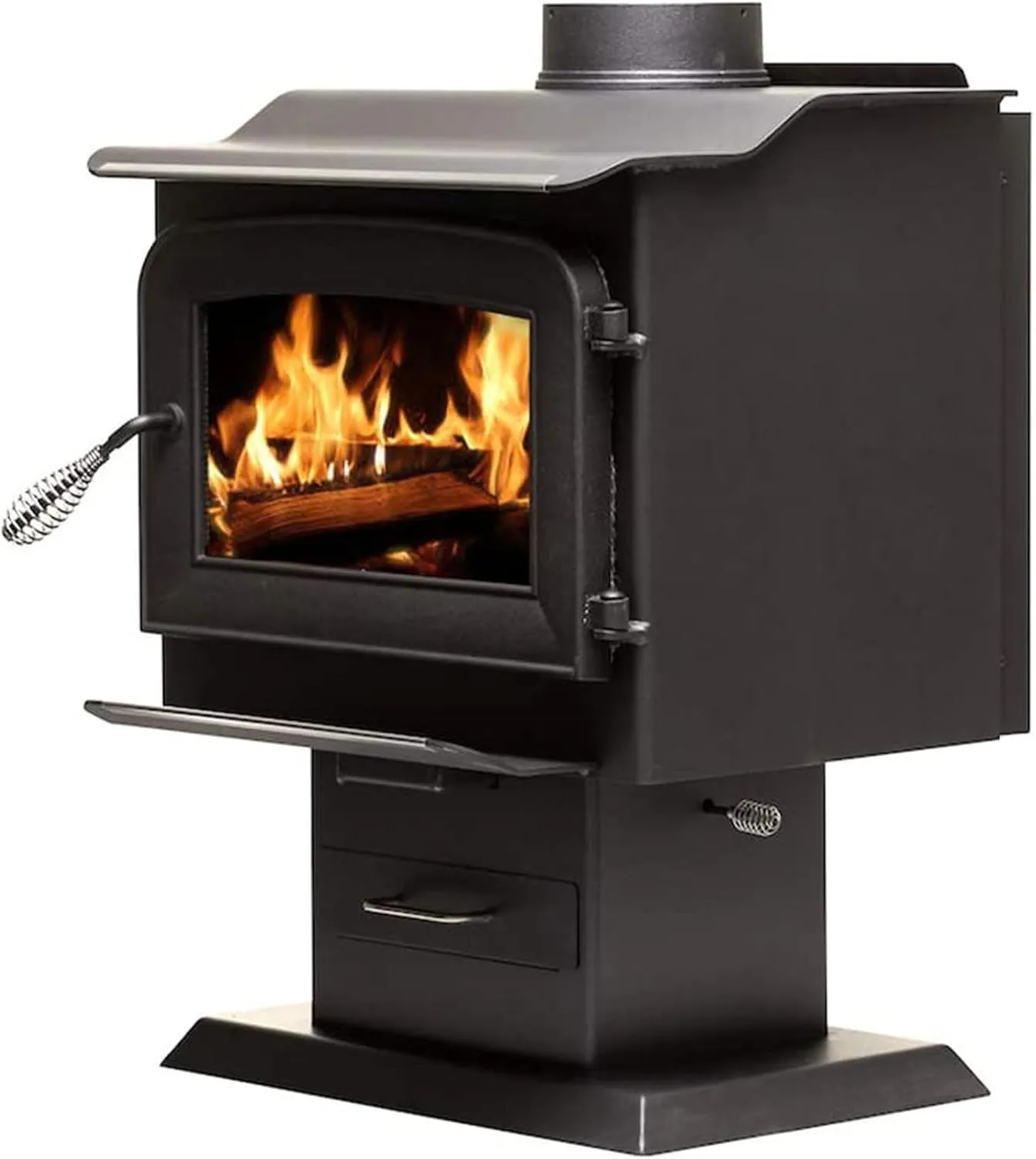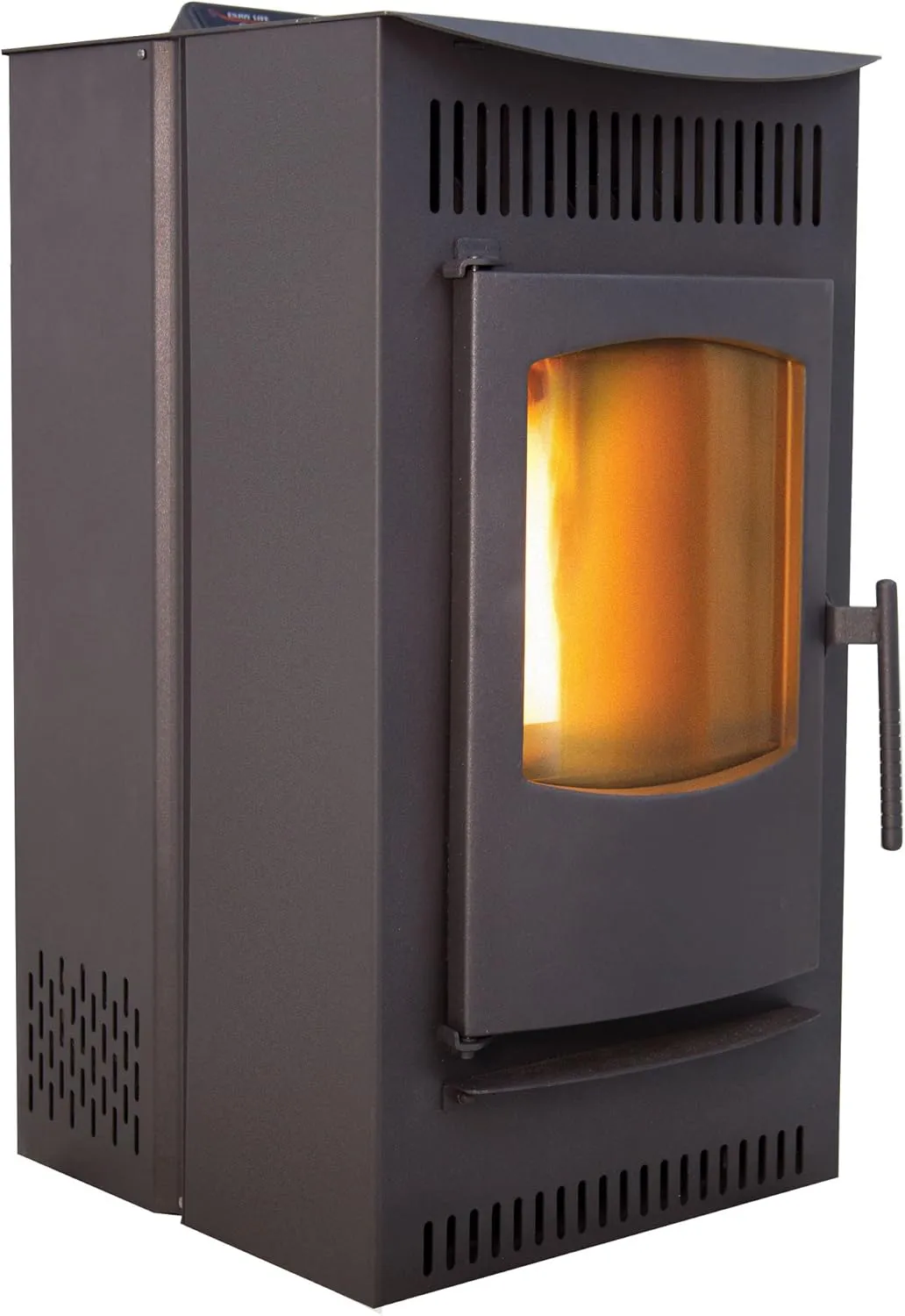
Earth Stoves are a popular choice for homeowners who want an efficient, eco-friendly way to heat their homes. But like any heating system, they occasionally encounter problems.
Whether you’re dealing with low heat output, a smoky room, or a clogged chimney, understanding how to troubleshoot common issues can save you time and money.
In this guide, we’ll walk through some of the most frequent problems Earth Stove owners face and how to fix them.
Key Components of an Earth Stove
An Earth Stove typically consists of a firebox, a glass door, an air intake system, and a chimney or flue for ventilation. Understanding the function of each part is crucial:
- Firebox: The area where the fire burns.
- Air intake system: Regulates airflow for combustion.
- Glass door: Allows you to monitor the fire while keeping it contained.
- Chimney/flue: Removes smoke and gases from your home.
Best Value
Ashley Hearth EPA Certified Pedestal Wood Burning Stove

Best Value
Serenity 1,500 square ft. Heating Capability Pellet Stove

How Earth Stoves Work
Earth Stoves work on the principle of controlled combustion, where wood burns in a well-regulated environment, allowing for maximum heat efficiency with minimal emissions.
By controlling the air supply and using high-quality fuel, you can ensure your stove operates efficiently.
Common Issues with Earth Stoves
Let’s take a look at some of the most common issues Earth Stove owners encounter and the steps you can take to resolve them.
Difficulty Igniting the Fire
One of the most frequent complaints is trouble getting a fire started. If you’re struggling to light your stove, here are some potential causes:
- Damp wood: Wood that hasn’t been properly seasoned contains too much moisture, making it difficult to ignite.
- Poor airflow: If your air intake system is blocked or closed, the fire won’t get enough oxygen to burn.
Fix: Use dry, seasoned wood, and ensure that your air intake system is open and free of obstructions.
Smoke Entering the Room
If smoke is coming back into your living space rather than exiting through the chimney, you could be dealing with a draft issue or a blockage in the chimney.
Step-by-step solution:
- Check for obstructions in the chimney such as creosote buildup or debris.
- Ensure your stove is properly vented, and the chimney cap is clear.
- Open a window slightly to increase airflow and improve the draft.
Poor Heat Output
If your stove isn’t providing enough warmth, the problem could be related to the type of wood you’re using or inefficient combustion.
Reasons for poor heat output:
- Low-quality fuel: Wet or green wood produces less heat and more smoke.
- Inefficient burn: Insufficient oxygen or a clogged air intake can reduce the stove’s efficiency.
Solution: Stick to seasoned hardwood and ensure your air intake is functioning correctly. Clean out any ash or debris that may be obstructing airflow.
Stove Overheating
An overheating stove can damage components and pose a safety risk. This issue is usually caused by overloading the firebox or improper airflow.
Fixes:
- Avoid overloading the stove with too much wood at once.
- Make sure the air intake is adjusted to provide adequate oxygen to the fire without overheating.
Glass Door Turning Black
Soot buildup on the glass door is a common issue and is usually caused by burning wood that is too wet or running the stove at low temperatures.
Cleaning technique: Use a damp cloth with some wood ash to clean the glass. To prevent this in the future, burn only seasoned wood and operate your stove at higher temperatures to ensure complete combustion.
Unusual Noises from the Stove
If your earth stove is making strange popping, hissing, or banging noises, it could indicate a few different issues:
- Metal expansion: As the stove heats and cools, metal parts may expand or contract, causing popping noises.
- Creosote build-up: A buildup in the chimney can sometimes create odd sounds as it heats up.
- Air leaks: If seals or gaskets are worn out, excess air can enter the stove, causing irregular burning.
Quick Fixes:
- Check and replace worn-out gaskets or seals to prevent air leaks.
- Regularly clean the stove and chimney to remove any creosote buildup.
- If the noises persist or sound more severe, it might be time to call a professional.
Chimney and Ventilation Problems
Your stove’s performance is highly dependent on proper chimney maintenance. Many issues related to smoke or heat output can often be traced back to the chimney.
Chimney Blockage
Blockages in the chimney can be caused by creosote buildup, bird nests, or other debris that prevent smoke from venting properly. This leads to poor draft, and in some cases, smoke can re-enter the home.
How to safely clear blockages:
- Use a chimney brush to clear creosote buildup.
- Check the chimney cap for debris or bird nests and clear them out.
- Consider installing a cap with a screen to prevent future blockages.
Draft Issues
A proper draft is essential for pulling smoke and gases out of your home. If the draft is weak, your stove won’t function efficiently.
Improving draft performance:
- Ensure that your chimney is tall enough to create sufficient draft (at least 15 feet is recommended).
- Open a nearby window slightly to help improve airflow in your home.
- Make sure there are no obstructions in the chimney that could be hampering draft performance.
Creosote Buildup
Creosote is a highly flammable substance that forms when wood is burned inefficiently, and it can pose a serious fire hazard if not dealt with regularly.
Prevention tips:
- Burn only dry, seasoned wood to reduce creosote formation.
- Operate your stove at higher temperatures to ensure a clean burn.
- Have your chimney professionally inspected and cleaned at least once a year.
Maintaining Your Earth Stove for Optimal Performance
Routine maintenance is key to keeping your Earth Stove running efficiently and safely. Regular cleaning and part inspection can prevent most common problems before they arise.
Regular Cleaning and Maintenance
Your stove should be cleaned frequently, especially during heavy use in the winter months.
Cleaning schedule:
- Daily: Clear out ash from the firebox.
- Monthly: Clean the glass door and check the air intake system for blockages.
- Annually: Have a professional inspect and clean the chimney.
Inspecting Seals and Gaskets
The seals around your stove door and any gaskets should be tight to prevent air leaks, which can reduce the stove’s efficiency and cause it to overheat.
How to inspect and replace seals:
- Check the door seal for cracks or gaps.
- If the gasket feels brittle or damaged, it needs to be replaced. You can purchase replacement gaskets from most hardware stores or stove retailers.
- Ensure the new gasket fits snugly to maintain an airtight seal.
Identifying Issues That Require Expert Help
If your stove continues to experience issues despite regular maintenance, or if you notice any of the following, it’s time to call a professional:
- Persistent smoke entering the room
- Visible cracks in the stove or chimney
- Excessive creosote buildup you can’t remove yourself
- Strange or loud noises coming from the chimney
Preventative Tips for Long-Term Stove Health
Maintaining your Earth Stove over the long term is all about consistent upkeep and using the right materials.
The type of wood you burn plays a significant role in your stove’s performance. Always opt for seasoned hardwoods like oak, maple, or ash. These woods burn hotter and more efficiently than softwoods or green wood.
Importance of seasoned wood:
- Produces more heat per log
- Reduces creosote buildup
- Ensures a cleaner, more efficient burn
Proper Stove Loading Techniques
How you load your stove can affect how efficiently it burns. Overloading can cause inefficient combustion, while underloading might not produce enough heat.
Best practices:
- Stack wood loosely to allow airflow between logs.
- Start with smaller kindling and gradually add larger logs as the fire grows.
- Don’t overfill the firebox—leave room for air to circulate.
FAQs
How often should I clean my Earth Stove?
It’s best to clean your stove regularly during the heating season. Ash should be removed daily, and a full cleaning of the glass, air intake, and chimney should be done monthly or as needed.
What kind of wood is best for my Earth Stove?
Seasoned hardwoods like oak, maple, and ash are ideal for Earth Stoves. These woods burn hotter and longer than softwoods and produce less creosote.
How do I know if my chimney needs cleaning?
Signs that your chimney needs cleaning include reduced draft, visible soot, and creosote buildup inside the flue. If you notice smoke coming into the room, it’s time for a cleaning.
Why is my stove making loud popping noises?
Popping noises are often caused by the metal expanding and contracting as it heats up or cools down. If the noises are frequent and loud, check for air leaks or creosote buildup in the chimney.
Can I leave my stove burning overnight?
Yes, but make sure to use large, slow-burning logs and reduce the air intake to keep the fire going at a low, steady rate. Always ensure your stove is operating safely before leaving it unattended.
Affiliate Disclosure: Fireplaceadviser.com is a participant in the Amazon Services LLC Associates Program. We may earn a commission when you click on certain links on this site and purchase.

Hello!! I am Jamal Khan. I often fix my home electric heaters and gas stove problems and research the common issues in the heating units to improve my knowledge and expertise. The aim of establishing fireplaceadviser.com is to share my expertise and knowledge with my audience.












